When caring for bonsai on a daily basis I find it important to look at pictures of the trees taken in the past so I can see how much they have developed. In this post I wanted to show the progression of a Japanese Black Pine in the literati style.
The subject of literati is too broad, requiring its own post for me to adequately describe it here, but I did want to give a basic idea of what it is. The word literati means a “man of letters”. The Chinese literati were scholar-bureaucrats involved in politics, literature, and art. The paintings created by these men featured trees with slender, angular trunks and branches, with sparse foliage. I admit this definition does not encapsulate all that the literati style is, but as I said, that topic is for another time. For more information about literati bonsai see the Art of Bonsai Project’s “A brief exploration of the Literati Style.”
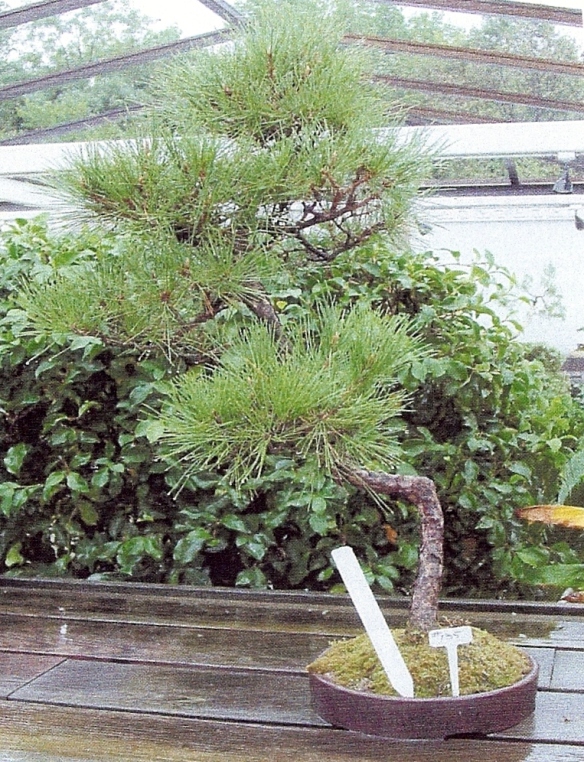 This Japanese Black Pine pictured in 2002 upon the death of its creator, local penjing artist, Stanly Chin, was among 10 trees donated to the Museum by the Chin Family after Stanly’s passing.
This Japanese Black Pine pictured in 2002 upon the death of its creator, local penjing artist, Stanly Chin, was among 10 trees donated to the Museum by the Chin Family after Stanly’s passing.
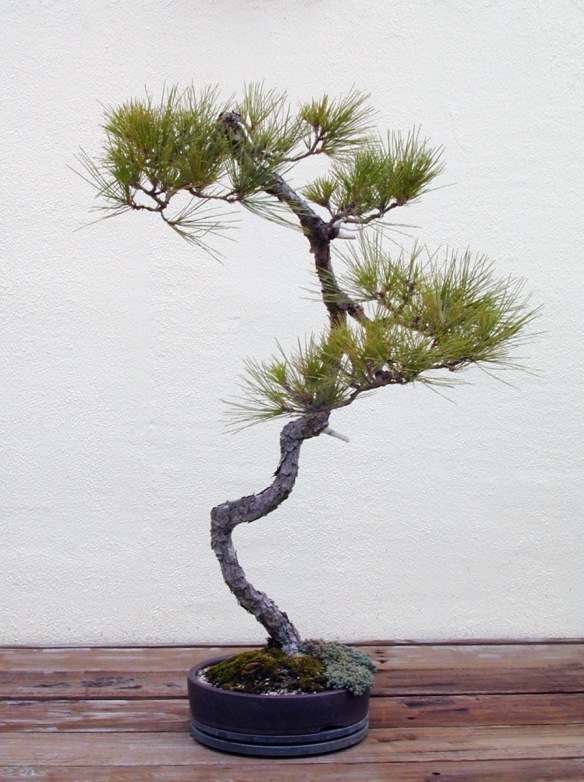 Sometime between 2002 and this photo in 2006, the apex died back as a result of a twig girdler.
Sometime between 2002 and this photo in 2006, the apex died back as a result of a twig girdler.
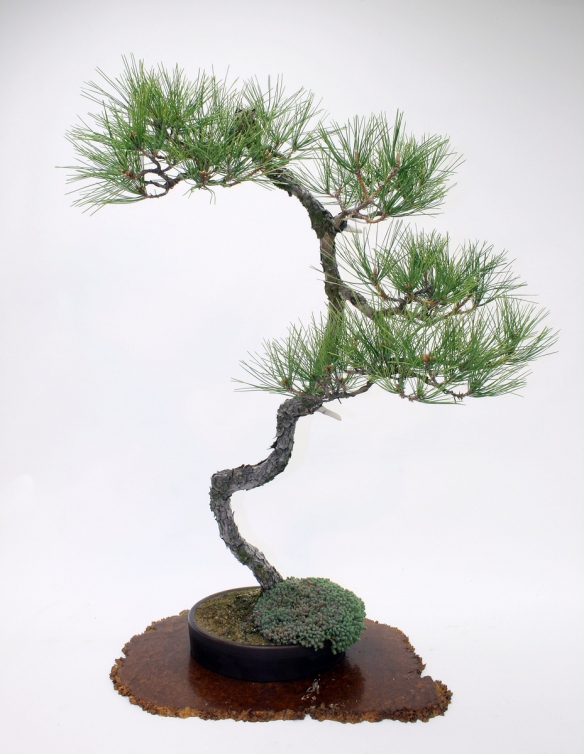 The pine was allowed to grow and regain its vigor. Here is the tree in 2008.
The pine was allowed to grow and regain its vigor. Here is the tree in 2008.
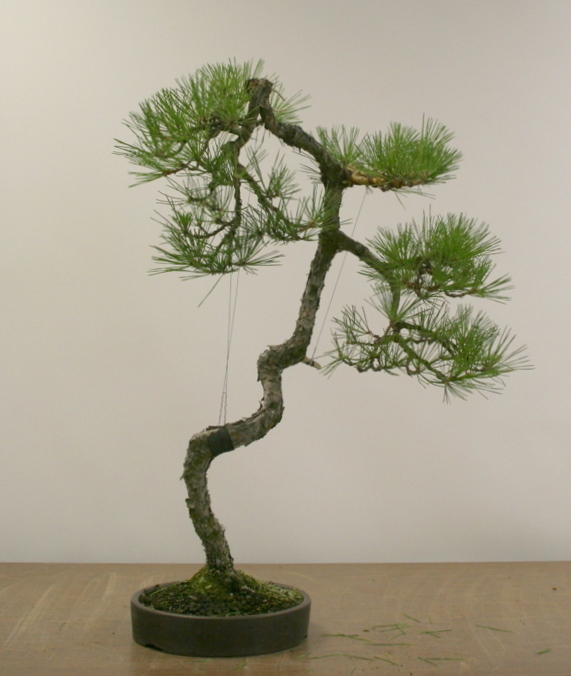 Since the apex died back, the tree was needing to be restyled. In 2009 the branches were wired and the needles plucked. Initially all the branches were used in this first design.
Since the apex died back, the tree was needing to be restyled. In 2009 the branches were wired and the needles plucked. Initially all the branches were used in this first design.
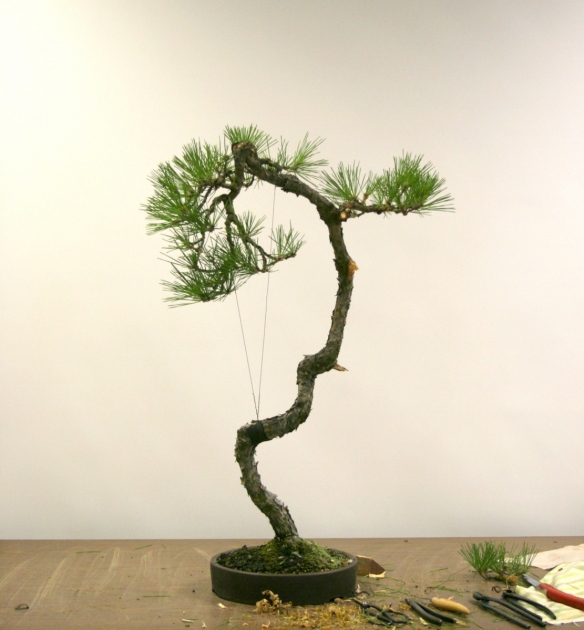 In keeping with the literati style it was decided that the branch on the right should be removed in order to accentuate the trunk and minimize the amount of foliage.
In keeping with the literati style it was decided that the branch on the right should be removed in order to accentuate the trunk and minimize the amount of foliage.
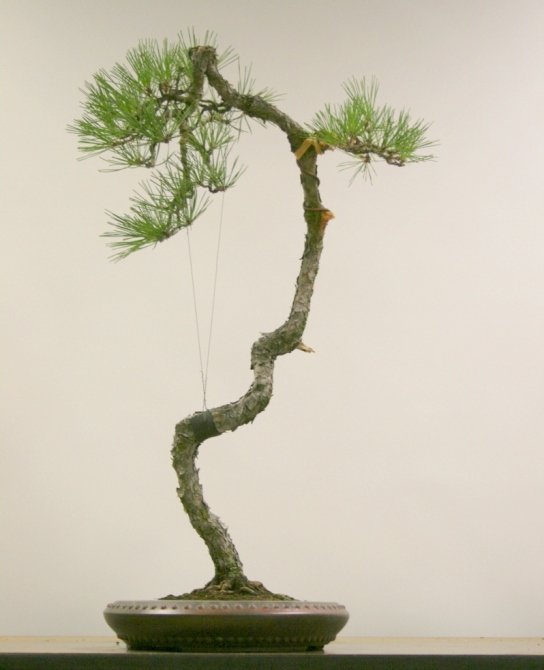 The next stage was choosing a more suitable pot for the tree. Literati are typically planted in round pots, such as the rustic nanban style or the rivited drum style pot. Drum pots are one of my favorite type of pots, so I selected two that could work with the tree.
The next stage was choosing a more suitable pot for the tree. Literati are typically planted in round pots, such as the rustic nanban style or the rivited drum style pot. Drum pots are one of my favorite type of pots, so I selected two that could work with the tree.
Since this bonsai belongs to the Chinese Collection I wanted the tree to have a more classical Chinese style . I think this iron oxide colored pot is more along the Japanese aesthetic and is slightly larger than I would like.
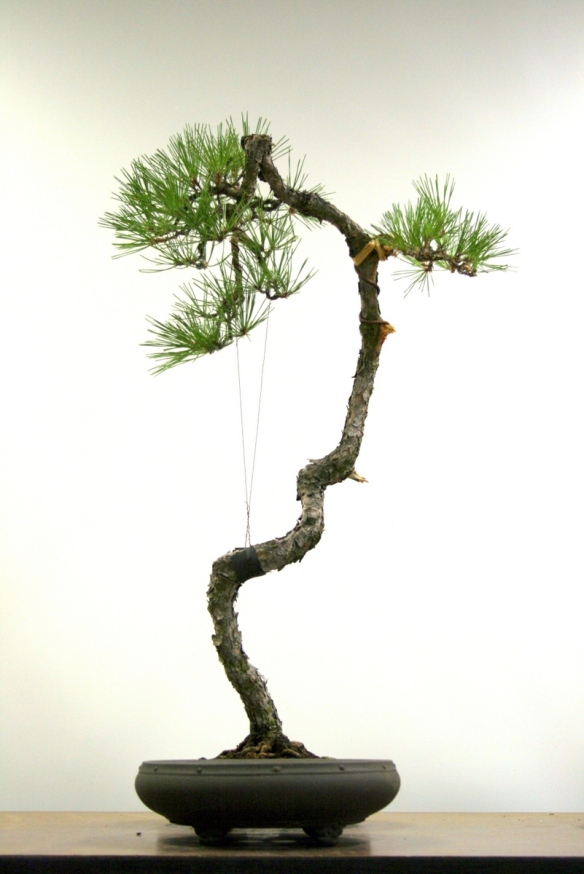 This other round pot has the riveting like the first and is better proportioned for the tree. I also like the cloud feet that elevate the tree and give the feeling that the tree is growing all alone on mountain top.
This other round pot has the riveting like the first and is better proportioned for the tree. I also like the cloud feet that elevate the tree and give the feeling that the tree is growing all alone on mountain top.
 July 2012, the pine is ready for candle cutting.
July 2012, the pine is ready for candle cutting.
 There are a variety of de-candling techniques when working with pine. I have been using the stub (peg & neck) method in which a stub from the candle is left in proportion to the vigor of the candle. The more vigorous the shoot the larger the stub. You can see a medium strength shoot on the left and a strong shoot on the right.
There are a variety of de-candling techniques when working with pine. I have been using the stub (peg & neck) method in which a stub from the candle is left in proportion to the vigor of the candle. The more vigorous the shoot the larger the stub. You can see a medium strength shoot on the left and a strong shoot on the right.
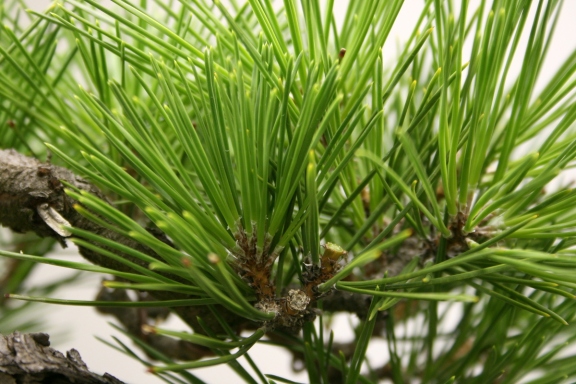 The strong shoot is removed leaving a 1/4 inch stub.
The strong shoot is removed leaving a 1/4 inch stub.
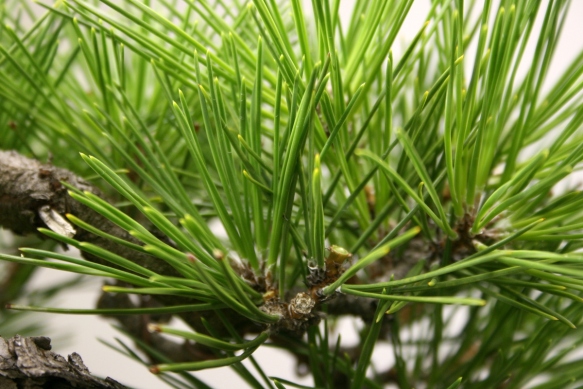 For the medium shoot I leave a stub 1/8th inches long.
For the medium shoot I leave a stub 1/8th inches long.
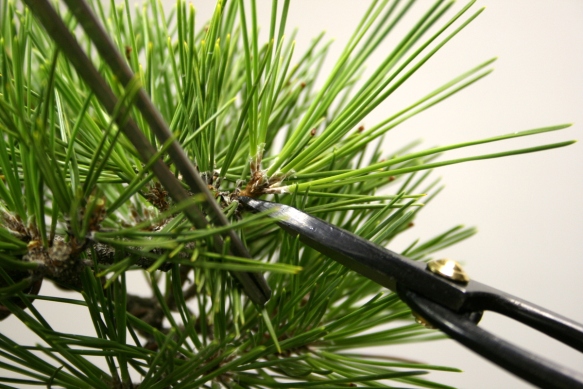 The small shoot is removed completely leaving no stub.
The small shoot is removed completely leaving no stub.
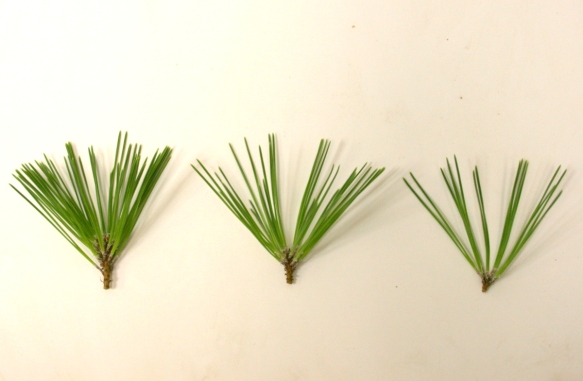 Obligatory shot of strong, medium, and small pine shoots.
Obligatory shot of strong, medium, and small pine shoots.
With the spring candles cut, the pine is ready to send out its second flush of growth. You can be sure more photos of this tree will be taken as it continues to develop. Now grab your camera and snap some pictures of your own bonsai before they’re all grown up.
Please subscribe to this blog in order to receive updates of new posts, to support the N.B.P.M., and to help me know how many people are reading. Thanks!

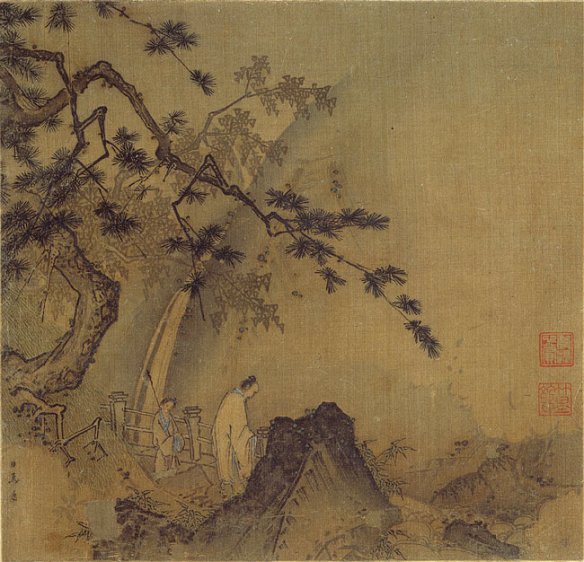
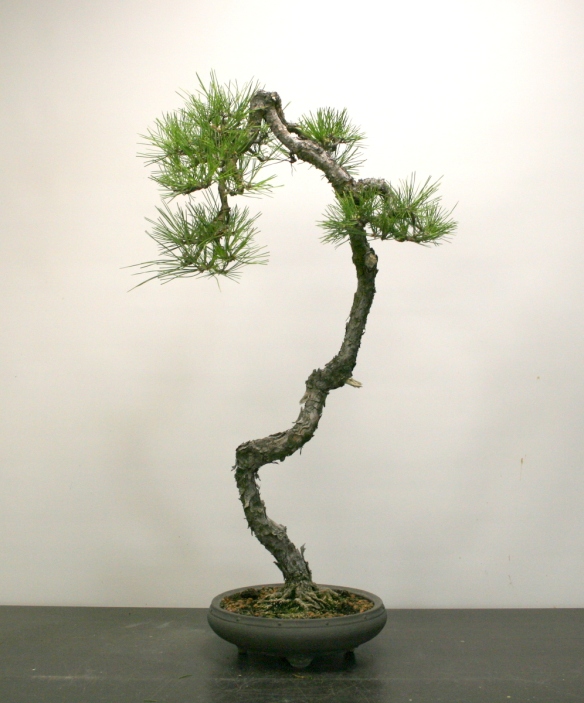
Pingback: Bonsai Cursus » Blog Archive » The gradual progression of a literati pine bonsai | Capital Bonsai
Nice post. I have a Scots Pine similar in style to this tree. I might just take your advice and photograph it before it’s all grown up. Thanks.
THANK YOU!! Very helpful, and appreciated
Reginald Rose, Tupelo, Ms.
Glad to hear it was helpful.
Pingback: Bunjin! For Love of Bonsai, A Little Counter Point, Yankee Bonsai Artists & What Is It About the Eel River?
The photos showing ‘shoot pruning’ on the literati style pine were exceptional. It was easy to see what you were doing. That is not always the case with other Bonsai photos that I have seen.
Thanks Jerry, glad to hear it.
Pingback: Ryan Neil visits the Museum | Capital Bonsai